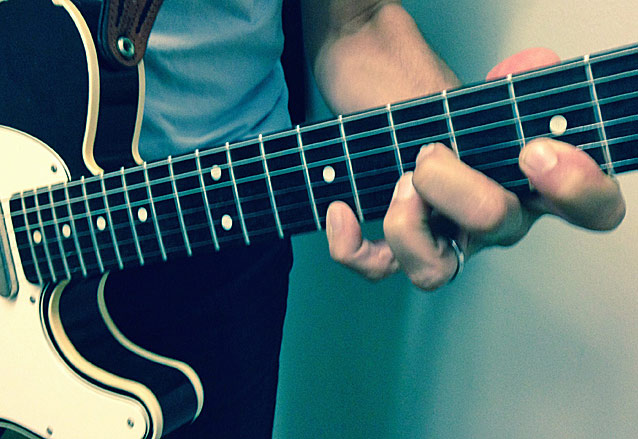Two Things You Must Practice to Master Pentatonics
Two handy techniques that will help you master pentatonics all over the neck and move smoothly between positions.

Chances are if you use the minor pentatonic scale frequently, you might take your method of playing it for granted. And it’s possible that your technique could be holding you back from getting the most out of the standard two-note-per-string pentatonic shapes.
In this video, Claus Levin offers two handy fingering techniques that will help you master pentatonics all over the neck and move smoothly between positions.
“The pentatonic two-note-per-string shapes really require you to use an unorthodox fingering,” Claus says. “When I started out, I came from classical guitar and was used to putting one finger per fret, so each finger was designated to each fret.”
Claus says he used this method for the minor pentatonic scale for quite a while, but says “it was not until I opened up for a new way of fingering the shape that I was able to utilize it in all positions and go back and forth between positions and play all kinds of sequences within the shape.”
In the video, Claus demonstrates fingering methods—including some helpful techniques for your ring finger—as well as thumb placement—when to use it behind the neck and when to grip it over the top of the fretboard.
There’s a lot of good advice in here, so have a look.
Check out Claus’s YouTube channel for more.
Get The Pick Newsletter
All the latest guitar news, interviews, lessons, reviews, deals and more, direct to your inbox!
“There are so many sounds to be discovered when you get away from using a pick”: Jared James Nichols shows you how to add “snap, crackle and pop” to your playing with banjo rolls and string snaps
Don't let chord inversions bamboozle you. It's simply the case of shuffling the notes around







![Joe Bonamassa [left] wears a deep blue suit and polka-dotted shirt and plays his green refin Strat; the late Irish blues legend Rory Gallagher [right] screams and inflicts some punishment on his heavily worn number one Stratocaster.](https://cdn.mos.cms.futurecdn.net/cw28h7UBcTVfTLs7p7eiLe.jpg)


